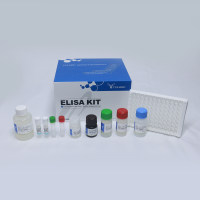Mutation Detection in Tumor Suppressor Genes Using Archival Tissue Specimens
互联网
互联网
相关产品推荐

促销中大鼠肿瘤坏死因子α(TNF-α)/Rat TNF-α/tumor necrosis factor (TNF superfamily,member 2)/Tnf;Tnfa;Tnfsf2;Tumor necrosis factor;Cachectin;TNF-alpha;Tumor necrosis factor ligand superfamily member 2;TNF-a) [Cleaved into: Tumor necrosis factor;membrane for/TNF/ELISA试剂盒
¥3420¥3800

Coagulation Factor III / Tissue Factor / CD142 鼠单抗 (FITC)
¥700

Recombinant-Xenopus-tropicalis-Transmembrane-protein-173tmem173Transmembrane protein 173 Alternative name(s): Stimulator of interferon genes protein; STING
¥11704

γ-氨基丁酸试剂盒,用于样本中GABA含量检测,微量法,GABA Content Detection Kit
¥358

Neuraminidase/NA重组蛋白|Recombinant H3N2 NA (H274Y mutation) (Active)
¥2800

